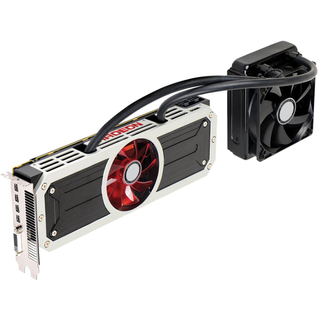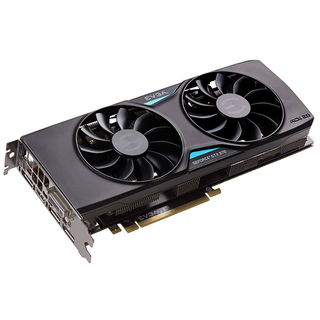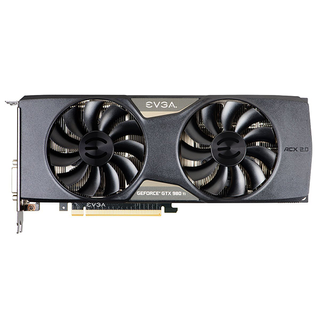Gigabyte GeForce GTX 980 Ti Xtreme Gaming Windforce Review
Gigabyte's GeForce GTX 980 Ti Xtreme Gaming might just be the fastest single-GPU graphics card we've ever tested. It features a custom PCB, binned and overclocked processor, and robust cooling.
Why you can trust Tom's Hardware
How We Test
Test System
In order for us to compare results between cards reviewed by any of our reviewers, Tom's Hardware standardized the test bench that we all use. By doing this, each of our locations can have different sets of cards and still compare from the pool of results that any of us have obtained. Starting with an MSI X99S XPower motherboard, each test bench has an Intel Core i7-5930K overclocked to 4.2GHz, 16GB of Crucial Balistix Sport DDR4, two Crucial 500GB SSDs and an 850W power supply from be quiet!.
Software And Drivers
After a number of high-profile AAA game releases and corresponding driver updates from AMD and Nvidia, we ran all of the cards in today's comparison through a fresh set of benchmarks rather than pulling data from older reviews. The Nvidia cards are tested using the 358.91 build (except for the Titan X, which employs 358.87). We started testing AMD GPUs with the Catalyst 15.11.1 beta beginning Nov. 14. The one exception is Sapphire's R9 Fury Tri-X; that card was only here for a week, so we had to pull its numbers from the original review using Catalyst 15.15 Beta.
Comparison GPUs
Nvidia's reference GeForce GTX 980 Ti is a formidable card; add a factory overclock and it becomes hard to find suitable comparisons. We dug out our VisionTek CryoVenom R9 295X2 to see if AMD's dual-GPU flagship is still the fastest solution available in one PCIe slot.
As a more value-oriented comparison, we tested two EVGA GeForce GTX 970 SC cards in SLI, which come close the price Gigabyte asks for its GeForce GTX 980 Ti Xtreme Gaming.
The next-fastest boards in our lab are Asus' GTX 980 Matrix Platinum and PowerColor's R9 390X Devil. They're both overclocked models, and each is priced significantly lower than Gigabyte's premium GeForce GTX 980 Ti.
Results from a GeForce GTX Titan X are included in our 4K results. We didn't test it at QHD due to time constraints. Also, we didn't have a reference GeForce GTX 980 Ti on-hand, so results were lifted from our launch coverage.
| Direct X | DirectX 11 |
|---|---|
| Graphics Drivers | PowerColor Radeon R9 390x Devil: AMD Catalyst 15.11.1 Beta VisionTek Radeon R9 295X2 CryoVenom: AMD Catalyst 15.11.1 Beta Sapphire Radeon R9 Fury Tri-X: AMD Catalyst 15.15 Gigabyte GeForce GTX 980 Ti Xtreme Gaming: GeForce Driver 358.91 Asus GeForce GTX 980 Matrix Platinum: GeForce Driver 358.91 EVGA GeForce GTX 970 SC ACX2.0: GeForce Driver 358.91 Zotac GeForce Titan X: GeForce Driver 358.87 |
Benchmarks
| Benchmarks | |
|---|---|
| Middle-earth: Shadow of Mordor | Built-in benchmark, 40-sec Fraps, Ultra preset |
| Battlefield 4 | Custom THG Benchmark, 100-sec Fraps, Ultra preset |
| Metro Last Light | Built-in benchmark, 145-sec Fraps, Very High preset, 16x AF, Normal motion blur |
| Tomb Raider | Version 1.01.748.0, Custom THG Benchmark, 40-sec Fraps, Ultimate preset |
| Far Cry 4 | Version 1.9.0, Custom THG benchmark, 60-sec Fraps, Ultra preset |
| Grand Theft Auto V | Build 350, Online 1.26, In-game benchmark sequence #5, 110-sec Fraps, FXAA: On, MSAA: 2x, Texture Quality: Very High, Shader Quality: Very High, Shadow Quality: High, Reflection Quality: Very High, Water Quality: High, Particles Quality: Very High, Grass Quality: High, Soft Shadows: Softer, Post FX: Very High, Anisotropic Filtering: 16x |
Noise
To test for noise, a handheld decibel meter records acoustic output two inches behind the graphics card's I/O bracket. The instrument has a floor of 35dB; anything lower and it registers 0dB. To represent a recording that comes back as 0dB, but clearly isn't silent, the graph is made to indicate 34dB. When no sound is generated (such as when the fans stop spinning in a semi-passive mode), the graph shows 0dB.
Power
To test power consumption using our reference platform, a bit of creative math is needed. Since Haswell-E processors don’t have integrated GPU cores, we can’t boot the system without a discrete board installed to get a baseline. We are able to estimate consumption based on the approximate power draw of the test bench, though. In our observations, we’ve found that the approximate power draw from everything other than the GPU is 120W. By deducting that from the recorded wattage reported on our in-line power meter, we can calculate the approximate draw of the GPU.
Gaming
Because this is an ultra high-end card, we found no reason to test at 1920x1080. Our benchmarks instead emphasize QHD (2560x1440) and 4K (3840x2160).
Stay on the Cutting Edge
Join the experts who read Tom's Hardware for the inside track on enthusiast PC tech news — and have for over 25 years. We'll send breaking news and in-depth reviews of CPUs, GPUs, AI, maker hardware and more straight to your inbox.
Kevin Carbotte is a contributing writer for Tom's Hardware who primarily covers VR and AR hardware. He has been writing for us for more than four years.
-
Gam3r01 I am mostly interested to see how it would stack up against an MSI Lightning or the ASUS Strix cards.Reply -
dstarr3 Ehh, if you keep waiting for the next best thing, you'll be waiting an eternity, because something newer and better is always just around the bend. Don't buy the next flagship Pascal card, wait for the Ti version. But don't buy that, wait for the next generation of Pascal because that'll be even more powerful and efficient, while being quieter. But don't buy that either, wait for the Ti.Reply
I picked up a 980 Ti last month and I love it, and I won't need a new card for several years now. There's a lot to be said about waiting, but you gotta take the plunge eventually. -
beshonk That's because it's a dual GPU card...You just proved you have no idea what you're talking about.Reply -
-Fran- ReplyThat's because it's a dual GPU card...You just proved you have no idea what you're talking about.
The Nissan GTR puts less than 3 seconds from 0 to 60 using a twin turbo V6 and beats exotic cars using V10s that cost 2 to 3 times more.
Unless you're brand loyal or actually care about multi GPU issues, dismissing the 295 just because is a dual GPU card is weird in my eyes.
--
I kinda missed the Fury X in there and nice showing by that 390X. Beating the 980 in a lot of tests. Too bad the consumption numbers are so bad.
Nice card none the less. I'll wait for the new batch of cards though to replace my lovely 7970Ghz.
Cheers! -
artk2219 Reply17344858 said:Lol at the R9 295x2 winning most of the benchmarks handily.
Thats what happens when its going against two 290X's, but the 980 TI doesn't have to deal with micro stuttering, it uses a whole lot less power, and puts out less heat. But, the 295's were priced really nicely when they were readily available. I saw one new open box at microcenter for $495 a few months ago, and I didn't pick it up... I still kind of regret that, I had it in my literal hands and everything :-/.
-
Epsilon_0EVP ReplyEhh, if you keep waiting for the next best thing, you'll be waiting an eternity, because something newer and better is always just around the bend. Don't buy the next flagship Pascal card, wait for the Ti version. But don't buy that, wait for the next generation of Pascal because that'll be even more powerful and efficient, while being quieter. But don't buy that either, wait for the Ti.
I picked up a 980 Ti last month and I love it, and I won't need a new card for several years now. There's a lot to be said about waiting, but you gotta take the plunge eventually.
The difference in this case is that we're having a massive die shrink for the first time in 4 years. Pascal and Polaris cards are likely to completely wreck the current cards in performance per watt, which could mean ridiculous performance gains as well. In this specific scenario, waiting is not a bad idea.
-
ael00 looks like a beastie. I especially like the fact that it shares the tank constructions of the 980/970 g1 series.Reply
Im sure if it wasn't 6 months late it would have dominated the 980ti/R9 fury market segment. No rgb fans will stop people hoarding cash for pascal tho ...



